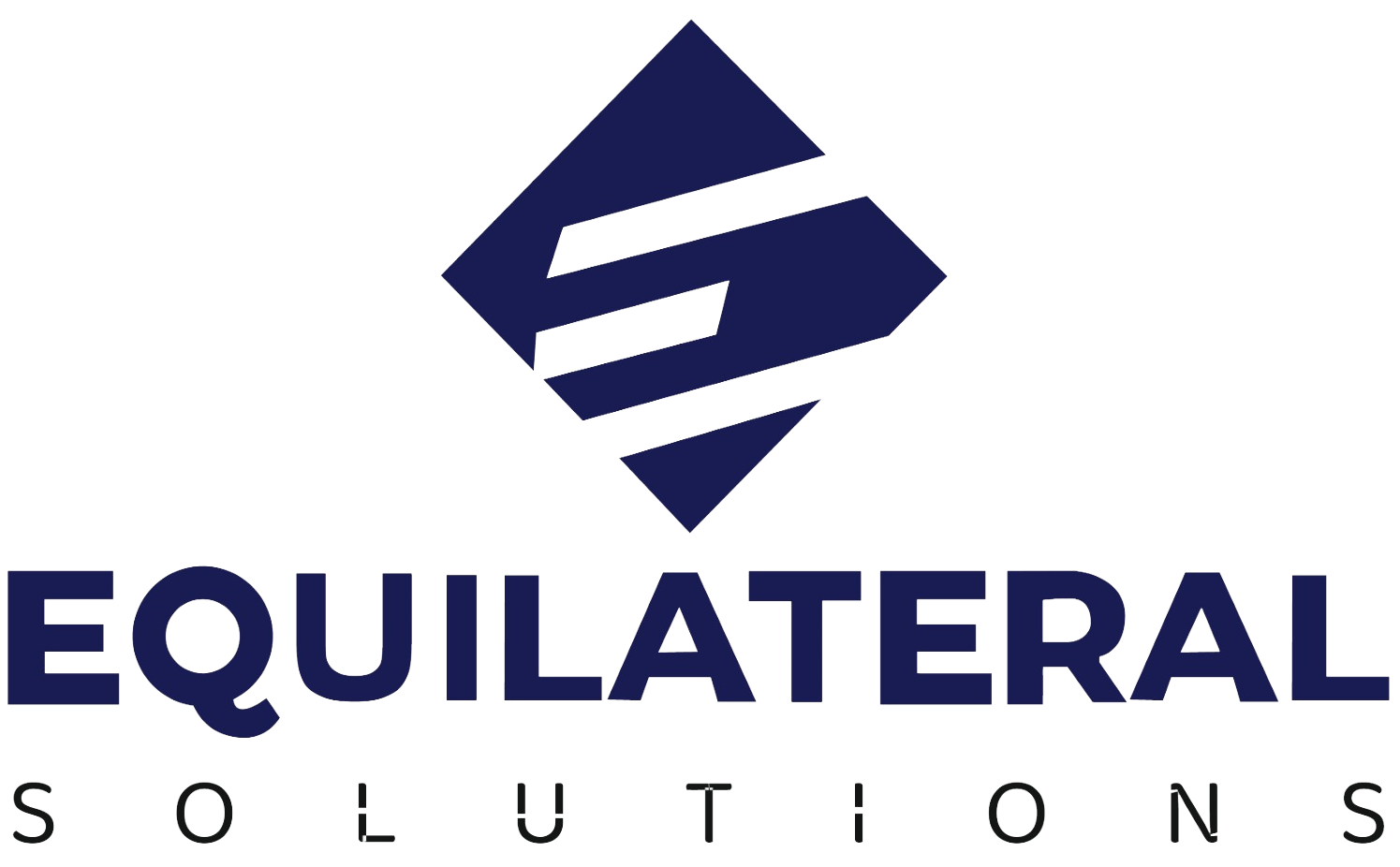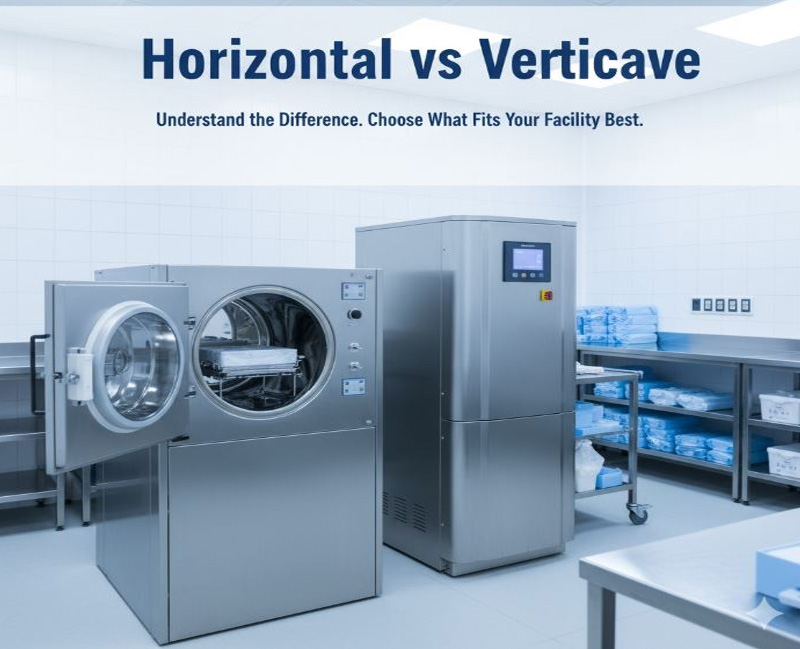In every hospital, laboratory, and pharmaceutical facility, maintaining sterility is essential for safety and compliance. At the heart of sterilization lies one crucial piece of equipment — the autoclave.
But here’s a common challenge professionals face: Should you choose a Horizontal Autoclave or a Vertical Autoclave? Both perform the same core function — sterilizing medical instruments, media, and materials — but they differ in design, capacity, and usability. These factors directly affect workflow efficiency and operational cost.
If you’re unsure which model best fits your setup, this guide provides a clear, side-by-side comparison. (Note: Equilateral Solutions manufactures Horizontal Steam Sterilization Equipment. The discussion of vertical autoclaves below is for educational purposes only.)
What is an Autoclave and How Does It Work?
An autoclave is a steam-based sterilization device that uses high temperature and pressure to eliminate all forms of microorganisms — bacteria, viruses, fungi, and spores. It’s the most reliable method to achieve complete sterilization in hospitals, laboratories, and industrial environments.
The standard sterilization process occurs at 121°C for 15–30 minutes under 15–30 psi pressure. At this temperature, saturated steam penetrates equipment surfaces, ensuring that even the most resistant spores are destroyed.
Why is steam used instead of dry heat? Because steam transfers heat more efficiently, reducing sterilization time while maintaining equipment safety.
Autoclaves are widely used in hospitals (surgical instruments, dressings), pharmaceutical manufacturing (media sterilization), microbiology labs (culture preparation), and even food and beverage industries to ensure hygiene and contamination-free products.
Understanding the Two Types – Horizontal and Vertical Autoclaves
What is a Vertical Autoclave?
A vertical autoclave is a compact, top-loading sterilizer widely used in microbiology labs, research facilities, and small hospitals. The chamber is cylindrical, and loading is done from the top.
Advantages of Vertical Autoclave:
- Space-saving: Perfect for smaller laboratories and clinics with limited floor space.
- Cost-effective: Requires a smaller initial investment compared to horizontal models.
- Easy operation: Designed for sterilizing small batches of instruments or media.
Vertical autoclaves are ideal when you need an efficient and affordable solution for light sterilization tasks, making them a popular choice for research and testing laboratories.
What is a Horizontal Autoclave?
A horizontal autoclave, also known as a front-loading autoclave, is designed for large-scale sterilization. It’s commonly used in hospitals, pharmaceutical plants, and industrial labs where bulk sterilization is routine.
Benefits of Horizontal Autoclave:
- Large capacity: Can sterilize a higher volume of instruments, dressing materials, and glassware in one cycle.
- Uniform steam distribution: Ensures consistent sterilization across the chamber.
- Faster cycles: Optimized for efficiency and productivity in high-demand environments.
Horizontal autoclaves are available in two variants:
- Horizontal Cylindrical Autoclave – Known for even steam distribution and pressure resistance.
- Horizontal Rectangular Autoclave – Designed for high-volume sterilization with maximum chamber utilization.
Horizontal vs Vertical Autoclave — Key Differences
| Feature | Horizontal Autoclave | Vertical Autoclave |
|---|---|---|
| Loading Type | Front-loading | Top-loading |
| Capacity | Large | Small to medium |
| Ideal Use | Hospitals, Pharma, Industrial Labs | Research, Microbiology Labs |
| Ease of Use | Suitable for large-scale operations | Compact, manual loading |
| Steam Distribution | Even, efficient | Vertical, limited for bulk items |
| Maintenance | Requires more space, higher maintenance | Easy to maintain |
| Cost | Higher initial investment | Budget-friendly |
In short, horizontal autoclaves are built for volume and efficiency, while vertical autoclaves are perfect for compact and cost-effective operations.
Choosing the Right Autoclave for Your Facility
Volume and Type of Load
If your facility regularly sterilizes instruments, dressing materials, or glassware in bulk, a Horizontal Autoclave is ideal. For test tubes, culture media, and small tools, a Vertical Autoclave can be sufficient.
Available Space
Vertical autoclaves are better suited for compact labs, while horizontal units require dedicated floor space and ventilation.
Energy Consumption
Horizontal autoclaves may use more energy but deliver better efficiency for continuous use. Vertical autoclaves are energy-efficient for intermittent workloads.
Automation and Controls
Modern autoclaves include digital controls, programmable cycles, and automatic door locking — features that improve safety and sterilization accuracy. (Equilateral’s autoclaves are equipped with smart automation for precise performance.)
Specifications to Look for in an Autoclave
- Chamber material: SS 304 or SS 316 for corrosion resistance and durability.
- Safety features: Pressure relief valves, interlocking doors, and steam release systems.
- Temperature control: Digital or microprocessor-based monitoring for precision.
- Compliance: ISO 13485, NABH, or GMP-certified equipment ensures safety and reliability.
Horizontal and Vertical Autoclave Applications
- Healthcare: Sterilizing surgical instruments, dressings, and glassware.
- Pharmaceutical Industry: Decontaminating media, packaging, and raw materials.
- Microbiology Labs: Sterilizing culture media, petri dishes, and test tubes.
- Food and Beverage: Ensuring microbial safety and hygienic packaging.
Why Choose Equilateral Solutions for Autoclaves?
Equilateral Solutions is a trusted manufacturer of Horizontal Steam Sterilization Equipment and Hospital CSSD Equipment in India. We design and build autoclaves that meet international hygiene, performance, and safety standards.
Our Promise:
- SS 304/316 stainless steel construction
- ISO 13485 certified quality systems
- Custom-built solutions for hospitals and pharma plants
- Reliable after-sales service and support
Explore our Horizontal Autoclave range at Equilateral Solutions
Final Thoughts
Choosing the right autoclave depends on your facility’s sterilization volume, available space, and operational requirements.
- Opt for a Horizontal Autoclave if your focus is on bulk sterilization and heavy-duty use.
- Choose a Vertical Autoclave if you need a compact, cost-effective solution for smaller loads.
Whichever model you choose, investing in a high-quality, stainless-steel autoclave ensures safety, longevity, and compliance.
Looking for a reliable autoclave manufacturer in India? Contact Equilateral Solutions today for customised sterilisation solutions designed for healthcare, research, and industry excellence.
Addressing Common Questions (FAQs)
- Why 121°C is used in autoclaves? Steam at 121°C ensures complete destruction of bacteria, viruses, and spores without damaging instruments.
- Why is autoclaving done for 15 minutes? 15 minutes is the optimal time for saturated steam to penetrate all surfaces for complete sterilization.
- Is autoclaving 100% sterilization? Yes — when operated correctly, autoclaves achieve total sterilization, including bacterial spores.
- Can I use RO or distilled water in autoclaves? Yes, using RO or distilled water prevents mineral scaling and ensures clean steam production.
- Which bacteria are not killed by autoclave? Proper autoclaving kills all known bacteria, including heat-resistant spores.

